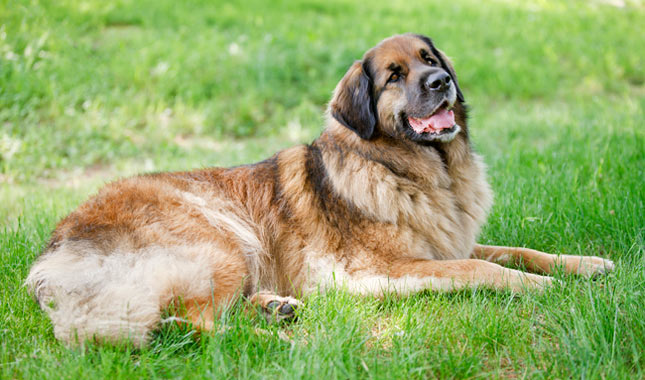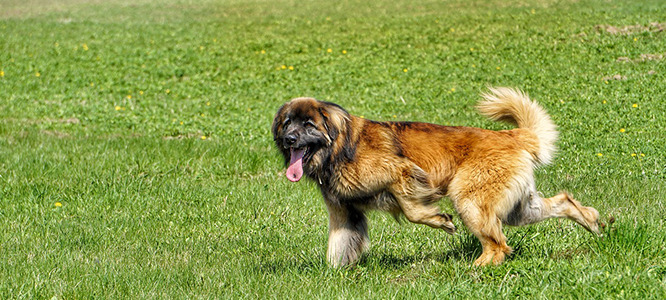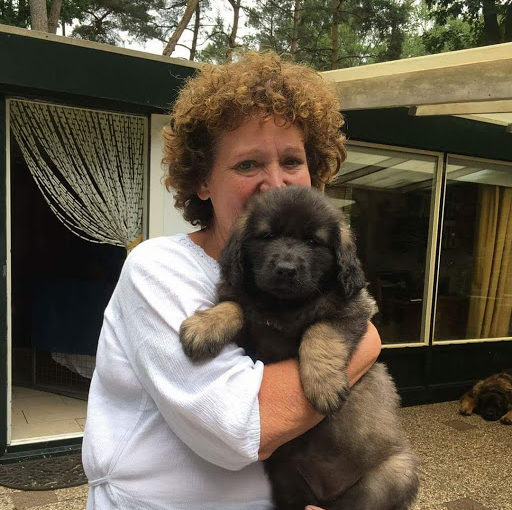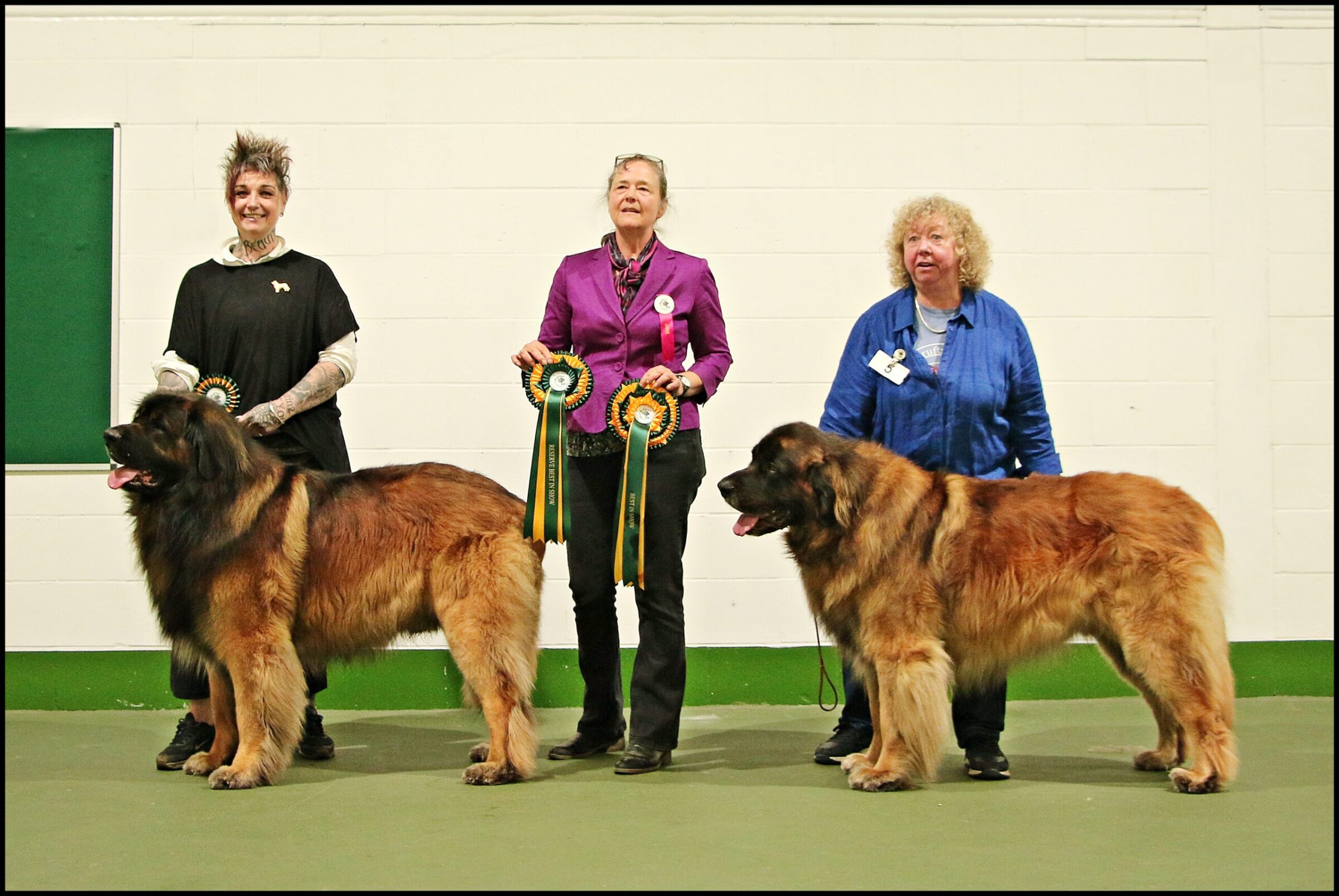In the realm of canine companions, few breeds stand out quite like the Leonberger, a gentle giant with a heart as big as their imposing stature. Hailing from Germany, this majestic breed has captivated hearts with their regal bearing, playful spirit, and unwavering loyalty. To truly appreciate the Leonberger’s unique charm, one must delve into the rich tapestry of their history, unraveling the threads that have shaped this remarkable breed into the beloved canine they are today.
Origins: A Noble Lineage

The Leonberger’s story begins in Leonberg, a picturesque town nestled amidst the rolling hills of Baden-Württemberg, Germany. In the mid-1800s, a local dog enthusiast named Heinrich Essig set out to create a breed that embodied the very essence of his hometown – a powerful yet gentle giant, a symbol of strength and nobility. With meticulous planning, Essig crossed three distinct breeds: the St. Bernard, the Leonberger, and the Newfoundlander. Each breed brought its unique traits to the mix, resulting in a canine with an unparalleled combination of size, temperament, and intelligence.
The Three Breeds That Shaped the Leonberger
- St. Bernard: Known for their incredible strength and endurance, the St. Bernard was used as a rescue dog in the Swiss Alps. They were also known for their gentle nature, making them ideal companions for Essig’s vision.
- Leonberger: This breed, native to the town of Leonberg, was known for its lion-like appearance, with a thick golden coat and a regal presence. They were also renowned for their intelligence and trainability.
- Newfoundland: Originating from Canada, the Newfoundland was a strong and sturdy breed, often used for water rescue due to their webbed feet and thick, water-resistant coat. They were also known for their gentle and loving nature.
With these three breeds as the foundation, Essig set out to create a canine that embodied the best of all worlds – strength, intelligence, and gentleness.
The Official Recognition of the Leonberger
After years of careful breeding and refinement, the Leonberger was officially recognized as a breed in 1846 by the German Kennel Club. However, it wasn’t until the late 19th century that the breed gained popularity outside of Germany, with many European royal families owning Leonbergers as pets. In fact, Queen Victoria of England was said to be a fan of the breed, further solidifying their status as a noble and prestigious canine companion.
Physical Characteristics: A Towering Presence

The Leonberger is a true giant of the canine world, standing tall and proud with a muscular body and a regal bearing. Their thick coat, ranging from golden to lion-red, provides ample insulation against harsh weather, a testament to their northern ancestry. Let’s take a closer look at some of the physical characteristics that make the Leonberger such a unique and captivating breed.
Size and Proportions
Leonbergers are large dogs, with males reaching an average height of 28-31 inches and females measuring between 25-29 inches. They can weigh anywhere from 120-170 pounds, with some exceptional individuals tipping the scales at over 200 pounds. Despite their size, Leonbergers are well-proportioned, with a balanced and athletic build. Their deep chest and broad shoulders give them a powerful appearance, while their long legs allow them to move with grace and agility.
Coat and Color
One of the most striking features of the Leonberger is their luxurious coat. It is double-layered, with a soft undercoat and a longer, coarser outer coat that provides protection against the elements. The coat is typically golden or lion-red in color, with black tips on the outer coat giving them a distinctive “black mask” appearance. Some Leonbergers may also have white markings on their chest and feet, adding to their unique and regal appearance.
Temperament: A Gentle Giant
Despite their imposing size, Leonbergers are known for their gentle and loving nature. They are incredibly loyal and devoted to their families, making them excellent companions and watchdogs. Their intelligence and trainability also make them well-suited for various tasks, such as therapy work, search and rescue, and even water rescue. However, due to their large size, it is essential to socialize and train Leonbergers from a young age to ensure they are well-behaved and well-adjusted members of society.
Health and Care: Keeping Your Leonberger Happy and Healthy

As with any breed, it is crucial to understand the specific health concerns that may affect Leonbergers. By being aware of these potential issues, owners can take preventative measures and provide proper care to keep their furry friends healthy and happy.
Common Health Concerns
- Hip and Elbow Dysplasia: Due to their large size, Leonbergers are prone to hip and elbow dysplasia, which is a hereditary condition that affects the joints. It can cause pain and discomfort and may require surgery in severe cases.
- Bloat: This is a life-threatening condition that occurs when a dog’s stomach fills with gas, fluid, or food, causing it to twist. It is more common in deep-chested breeds like the Leonberger, and symptoms include restlessness, pacing, and unsuccessful attempts to vomit. Immediate veterinary care is necessary if bloat is suspected.
- Heart Conditions: Some Leonbergers may be predisposed to certain heart conditions, such as dilated cardiomyopathy, which can lead to heart failure. Regular check-ups with a veterinarian can help detect and manage these conditions early on.
Grooming and Exercise Needs
Leonbergers have a thick, double coat that requires regular brushing to prevent matting and keep it in good condition. They also shed heavily, especially during seasonal changes, so owners should be prepared for some extra vacuuming. As for exercise, Leonbergers are relatively low-energy dogs and do not require excessive amounts of physical activity. However, they do enjoy daily walks and playtime, making them suitable for both apartment living and larger homes with yards.
Nutrition and Feeding Requirements
Due to their large size, Leonbergers have a hearty appetite and require a high-quality diet to support their growth and maintain their health. It is essential to feed them a well-balanced diet that provides all the necessary nutrients, including protein, fat, vitamins, and minerals. Owners should also monitor their dog’s weight and adjust their food intake accordingly to prevent obesity, which can lead to various health issues.
Fun Facts: Getting to Know the Leonberger

- The Leonberger was originally bred as a companion and working dog, but they were also used as draft animals, pulling carts and carriages.
- Despite their lion-like appearance, Leonbergers are known for their love of water and are excellent swimmers.
- In 2010, a Leonberger named Zeus was recognized by Guinness World Records as the tallest dog, measuring 44 inches from paw to shoulder.
- Leonbergers have a unique feature called “double dewclaws,” which are extra toes on their hind legs that provide additional traction when walking on snow or ice.
- The breed almost went extinct during World War I and II, but dedicated breeders worked tirelessly to revive the Leonberger population.
Conclusion: A Majestic Companion
In conclusion, the Leonberger is a truly remarkable breed, with a rich history, striking physical characteristics, and a gentle and loving temperament. They may be large in size, but their hearts are even bigger, making them ideal companions for families of all sizes. Whether you’re looking for a loyal and devoted companion or a majestic and regal addition to your family, the Leonberger is sure to capture your heart with their unique charm and undeniable presence.